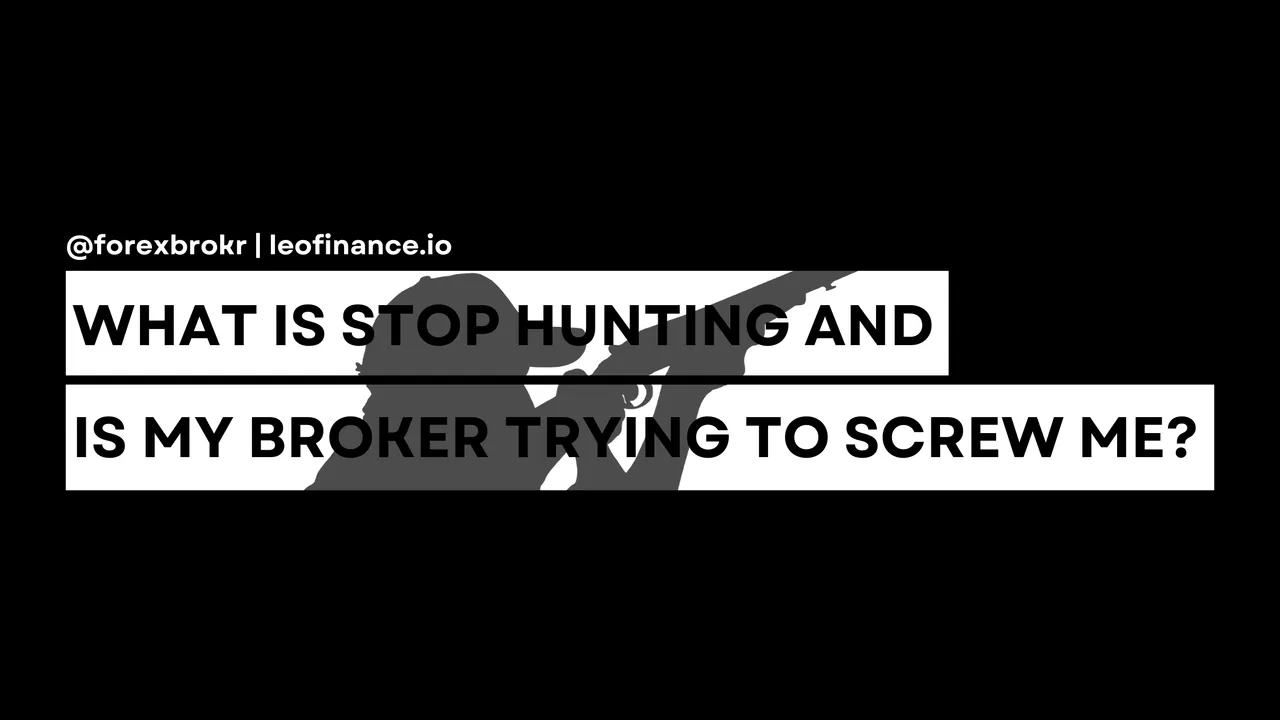
Direct from the desk of Dane Williams.
The concept of forex stop hunting often raises questions and concerns among traders.
Is my forex broker always trying to take advantage of me, or is there more to the story here?
Well, in this blog post I’ll delve into the intricacies of stop hunting, exploring both its potentially malicious aspects and the natural dynamics of the market.
Through two contrasting examples, I’m going to try and shed some light on how stop hunting can occur and why your broker isn’t always the bad guy here.
Example 1: Market maker forex broker stop hunting their b-book
Consider a market maker forex broker that operates with a b-book model, meaning they take the opposite side of their clients' trades in-house.
In this scenario, the broker obviously has access to information about where its own retail clients have placed their stop loss orders.
To capitalise on this information, the broker might engage in a classic case of stop hunting, which involves manipulating the prices on their own platform to trigger these stop loss orders for their own gain.
Let's say a substantial number of the broker's retail clients have placed stop loss orders just below a key support level in a particular currency pair.
The broker recognises this concentration of stop loss orders and sees an opportunity to profit from the situation.
The broker intentionally pushes the price down on their own platform, breaching the support level and triggering the stop losses of its clients.
No other broker’s price feeds went low enough to trigger their clients’ stops and after successfully hunting them on their own platform, returned to normal pricing.
In this way, the market maker forex broker manipulates the price to trigger the stop losses of its own retail clients on the b-book, enabling the broker to profit from both the spread and the losses incurred by its clients.
This practice can significantly boost the broker's revenue, highlighting the importance for traders to choose brokers with transparent and ethical trading practices to avoid falling victim to such tactics.
Example 2: Institutional hunt for liquidity
Next I want you to imagine a substantial institutional investor with a strategic outlook for a significant upward swing in EUR/USD.
However, executing such a substantial position all at once could cause a sharp and premature price increase, adversely affecting the institution's desired entry price.
To address this challenge, the institutional investor decides to employ a gradual accumulation strategy.
The goal is to acquire the full desired position size without causing disruptive market movements.
In order to do so, the institution seeks to identify sources of liquidity that will enable them to buy without causing undue price increases.
One potential source of liquidity is the presence of retail trader stop loss orders, placed just below a prominent support level.
After thorough market analysis, the institutional trader identifies a cluster of retail traders who have positioned their stop loss orders just beneath the noted support level.
Recognising the potential to leverage this liquidity, the institution devises a strategy to trigger these stop loss orders and essentially accumulate thanks to retail traders nown as dumb money.
To initiate this strategy, the institutional trader enters the market with smaller buy orders, temporarily pushing the price below the support level.
As these stop loss orders are triggered, a wave of selling activity is initiated among retail traders, contributing to a short-term dip in price.
This downward movement provides the institutional investor with an opportunity to purchase at a lower price, enabling them to accumulate a significant portion of their desired position.
Once the institutional position is secured, the trader allows the price to naturally recover, anticipating the anticipated upward swing.
By leveraging the liquidity provided by retail stop losses, the institutional investor successfully enters a substantial swing position without causing significant market disruption or slippage.
This example illustrates how institutional traders can strategically identify and capitalise on retail stop losses as a means to acquire liquidity and establish sizable positions in the forex market.
It underscores the importance for you to understand these dynamics and consider employing risk management strategies that account for potential market fluctuations resulting from the actions of larger institutional players looking to stop hunt for liquidity.
Final verdict on stop hunting by forex brokers
As you can see from these examples, the concept of stop hunting is multifaceted.
While some instances involve brokers seeking personal gain by manipulating client orders, others are a natural part of market dynamics.
It's vital for traders to be informed and discerning when selecting brokers, opting for those with transparent practices and an ECN model.
Additionally, understanding how institutions seek liquidity and use stop hunting as a strategy can help you stay on the right side of fakeouts.
Ride with the momentum, not against you.
Best of probabilities to you.